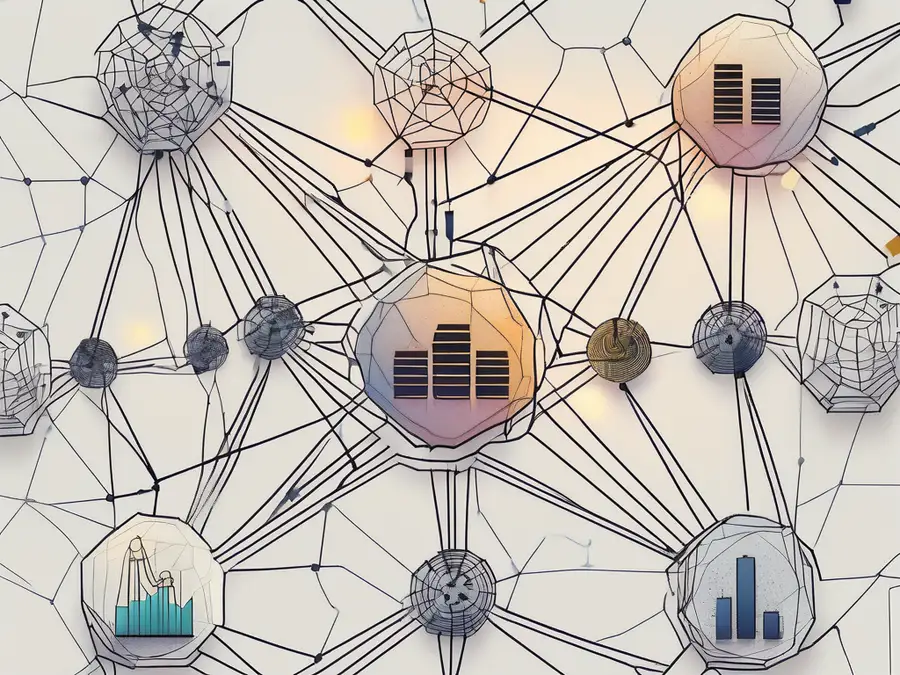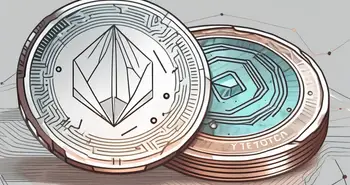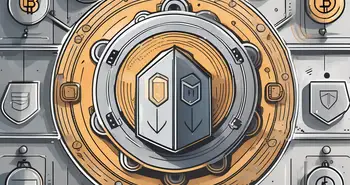How Difficult is Crypto Mining?

Cryptocurrency mining is a fascinating and ever-evolving concept that plays a pivotal role in ensuring the robustness and security of cryptocurrency networks. As an expert in this field, I am often asked about the impact of mining difficulty on these networks. In this article, I will delve into the nitty-gritty of mining difficulty and its profound influence on cryptocurrency networks.
Understanding Cryptocurrency Mining
Cryptocurrency mining serves two essential purposes in a decentralized network. Firstly, it validates and verifies transactions, ensuring the integrity of the network. Secondly, it creates new coins and distributes them among the miners as a reward for their efforts.
As the popularity of cryptocurrencies continues to rise, so does the complexity of mining operations. Miners are constantly upgrading their hardware and exploring innovative techniques to stay competitive in this rapidly evolving landscape.
The Process of Cryptocurrency Mining
Mining involves solving complex mathematical puzzles using powerful computers. Miners compete with each other to find the solution and add the next block of transactions to the blockchain. This process requires substantial computational power and consumes a significant amount of electricity.
Furthermore, the concept of mining pools has gained traction in recent years. Miners join forces in these pools to combine their computational resources and increase their chances of successfully mining a block. This collaborative approach allows smaller miners to participate in the mining process and receive a share of the rewards.
Key Factors in Cryptocurrency Mining
Several factors influence the success of a cryptocurrency miner. These include the mining hardware used, electricity costs, network connectivity, and the mining software employed. However, perhaps the most critical factor is the mining difficulty.
Mining difficulty refers to the level of complexity involved in solving the mathematical puzzles required to mine a block. This difficulty is adjusted regularly to ensure that new blocks are added to the blockchain at a consistent rate. Miners must constantly adapt to these changes and optimize their mining strategies to remain profitable in this competitive environment.
The Concept of Mining Difficulty
Mining difficulty refers to the measure of how hard it is to find a solution to the mathematical puzzle and add a new block to the blockchain. It is designed to regulate the rate at which new blocks are added to the network, maintaining a consistent block time.
When a miner attempts to add a new block to the blockchain, they must solve a complex mathematical problem. The difficulty of this problem is what ensures that the process of mining remains competitive and secure. As more miners join the network, the overall computational power increases, leading to a higher mining difficulty.
Definition and Importance of Mining Difficulty
Mining difficulty adjusts automatically at regular intervals to ensure that the average time between blocks remains constant. It prevents the network from becoming too fast or too slow, enabling a stable and secure environment for transactions to take place.
Furthermore, mining difficulty plays a crucial role in the overall security of the blockchain network. By making it challenging to add new blocks, the network becomes more resilient to attacks and tampering. This level of difficulty acts as a deterrent to malicious actors, as altering the blockchain would require an immense amount of computational power.
How Mining Difficulty is Determined
The mining difficulty is determined by the network's protocol and is typically adjusted based on the total computational power of the network. If the network's computational power increases, the difficulty adjusts upwards, making it harder to mine new blocks. Conversely, if the computational power decreases, the difficulty adjusts downwards, making mining easier.
It is important to note that the adjustment of mining difficulty is a key feature of many blockchain networks, including Bitcoin and Ethereum. This mechanism ensures that the system remains robust and that blocks are added at a consistent pace, regardless of fluctuations in the number of miners participating in the network.
The Relationship Between Mining Difficulty and Network Security
Mining difficulty plays a crucial role in maintaining the security of cryptocurrency networks.
Understanding the intricate connection between mining difficulty and network security is essential for grasping the underlying mechanisms that safeguard the integrity of blockchain systems. As miners compete to solve complex mathematical puzzles to add new blocks to the chain, the level of difficulty directly impacts the network's resilience against malicious attacks.
Mining Difficulty as a Security Measure
By increasing the mining difficulty, networks ensure that malicious actors cannot overpower the system by overwhelming it with computational power. This intricate balance acts as a deterrent, making it economically and practically infeasible for attackers to rewrite transaction history or perform double-spending attacks. The higher the mining difficulty, the more secure the network becomes, fortifying its defenses against potential threats.
Moreover, mining difficulty serves as a dynamic parameter that adjusts regularly to maintain a consistent block creation rate. This adaptive feature ensures that the network can withstand fluctuations in mining power, maintaining a stable and secure environment for transactions to occur seamlessly.
Potential Risks and Challenges
Although mining difficulty provides a robust security measure, it also poses challenges for miners. As the difficulty increases, miners need more powerful hardware and consume greater amounts of electricity to remain competitive. This escalating demand for resources can lead to a centralization of mining power in the hands of a few large players, potentially compromising the decentralized nature of cryptocurrencies. Striking a balance between enhancing network security and promoting decentralization remains a critical challenge that the cryptocurrency community continues to navigate.
Mining Difficulty and Cryptocurrency Value
Mining difficulty has a significant impact on the value of cryptocurrencies.
Influence on Cryptocurrency Price
As mining difficulty increases, the cost and effort required to mine new coins also increase. This reduced supply of newly minted coins can drive up their value in the market. Conversely, when mining becomes easier due to a decrease in difficulty, the supply of new coins increases, potentially causing a decrease in their value.
Impact on Market Capitalization
The relationship between mining difficulty and market capitalization is complex. An increase in mining difficulty can indicate growing demand and interest in the cryptocurrency, potentially leading to an increase in market capitalization. However, if the mining difficulty becomes excessively high, it may deter new miners from entering the network, affecting its growth and market capitalization negatively.
Future Predictions for Mining Difficulty
Looking ahead, the interplay between technological advancements and mining difficulty is likely to shape the landscape of cryptocurrency networks.
Technological Advancements and Mining Difficulty
Advancements in mining hardware and the development of more energy-efficient algorithms may alleviate the challenges faced by miners. These innovations could help maintain the decentralization of mining power while still ensuring network security.
Mining Difficulty Trends and Predictions
Based on current trends, mining difficulty is expected to continue increasing in most major cryptocurrencies. However, accurate predictions are challenging due to the influence of a multitude of factors, including changes in network participation and regulatory developments.
Having witnessed firsthand the impact of mining difficulty on cryptocurrency networks, my advice to potential miners is to carefully consider the dynamic nature of the mining landscape. Stay informed about technological advancements, evaluate the cost-benefit ratio, and join reputable mining pools that prioritize network decentralization.
FAQ
What is mining difficulty?
Mining difficulty refers to the measure of how hard it is to find a solution to a mathematical puzzle and add a new block to the blockchain. It adjusts automatically to maintain a consistent block time.
How is mining difficulty determined?
Mining difficulty is determined by the network's protocol and adjusts based on the total computational power of the network. It increases when more computational power joins the network and decreases when computational power decreases.
What is the relationship between mining difficulty and network security?
Increasing mining difficulty enhances network security by making it economically and practically infeasible for malicious actors to overpower the system. It prevents attacks such as double-spending and rewriting transaction history.
How does mining difficulty impact cryptocurrency value?
A higher mining difficulty can increase the value of cryptocurrencies by reducing the supply of newly minted coins. Conversely, a lower mining difficulty may increase the supply of new coins, possibly leading to a decrease in their value.
What does the future hold for mining difficulty?
With advancements in mining hardware and algorithms, the future of mining difficulty is likely to witness a balance between network security, decentralization, and ease of participation.
As an expert in the field, I encourage individuals to stay updated with the latest developments and continually evaluate the profitability and viability of mining endeavors. Mining difficulty is a crucial aspect of cryptocurrency networks, and understanding its impact is essential for anyone seeking to navigate the exciting world of cryptocurrencies.
As you navigate the complexities of mining difficulty and its impact on cryptocurrency networks, consider the advantages of trading with Morpher. This innovative platform transcends traditional investment boundaries, offering zero fees, infinite liquidity, and the ability to trade a multitude of assets, including cryptocurrencies. Whether you're looking to start small with fractional investing or leverage your trades up to 10x, Morpher provides a secure and unique trading experience on the Ethereum Blockchain. Ready to transform your trading journey? Sign Up and Get Your Free Sign Up Bonus today and join the future of investing with Morpher.

Disclaimer: All investments involve risk, and the past performance of a security, industry, sector, market, financial product, trading strategy, or individual’s trading does not guarantee future results or returns. Investors are fully responsible for any investment decisions they make. Such decisions should be based solely on an evaluation of their financial circumstances, investment objectives, risk tolerance, and liquidity needs. This post does not constitute investment advice.

Painless trading for everyone
Hundreds of markets all in one place - Apple, Bitcoin, Gold, Watches, NFTs, Sneakers and so much more.

Painless trading for everyone
Hundreds of markets all in one place - Apple, Bitcoin, Gold, Watches, NFTs, Sneakers and so much more.









